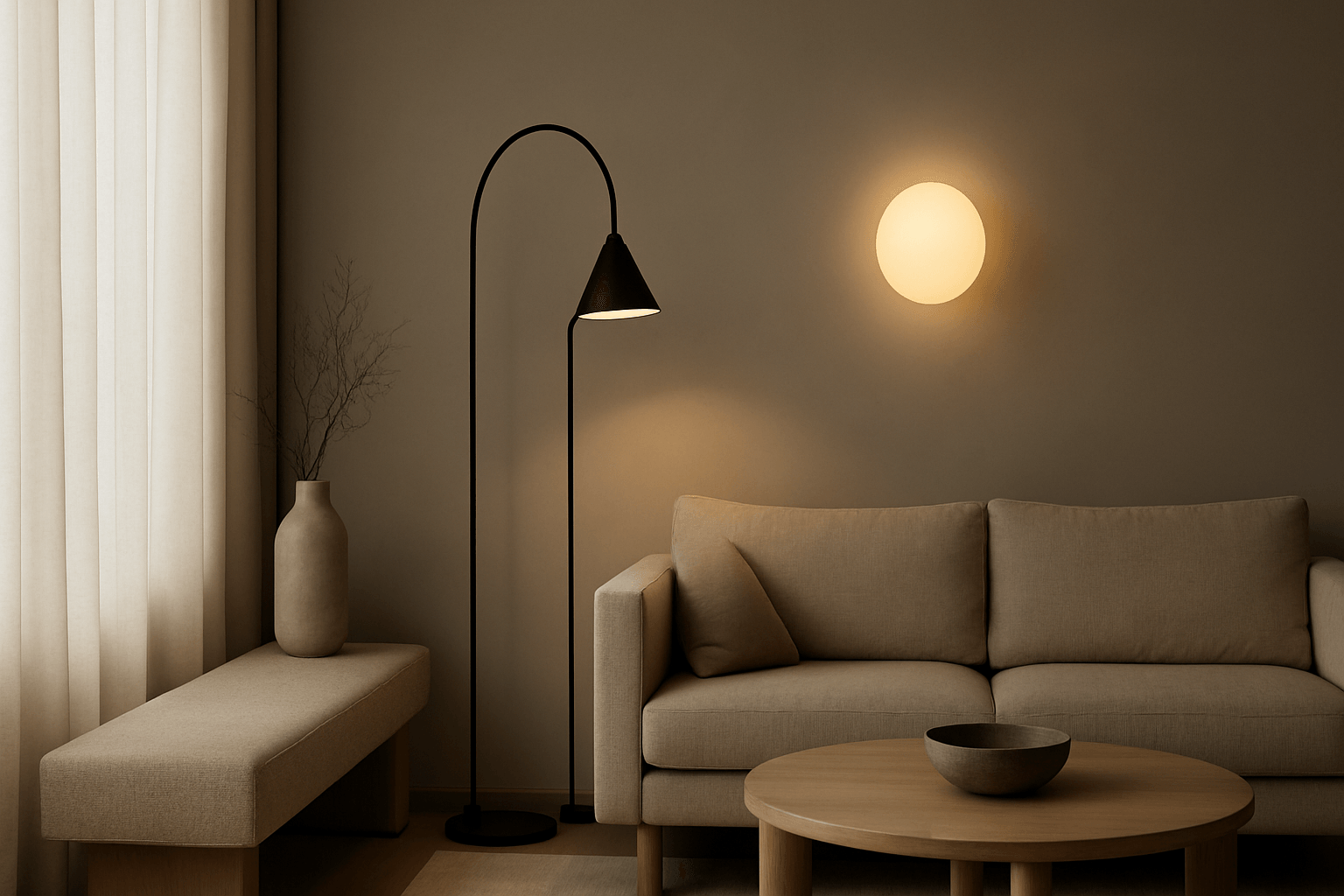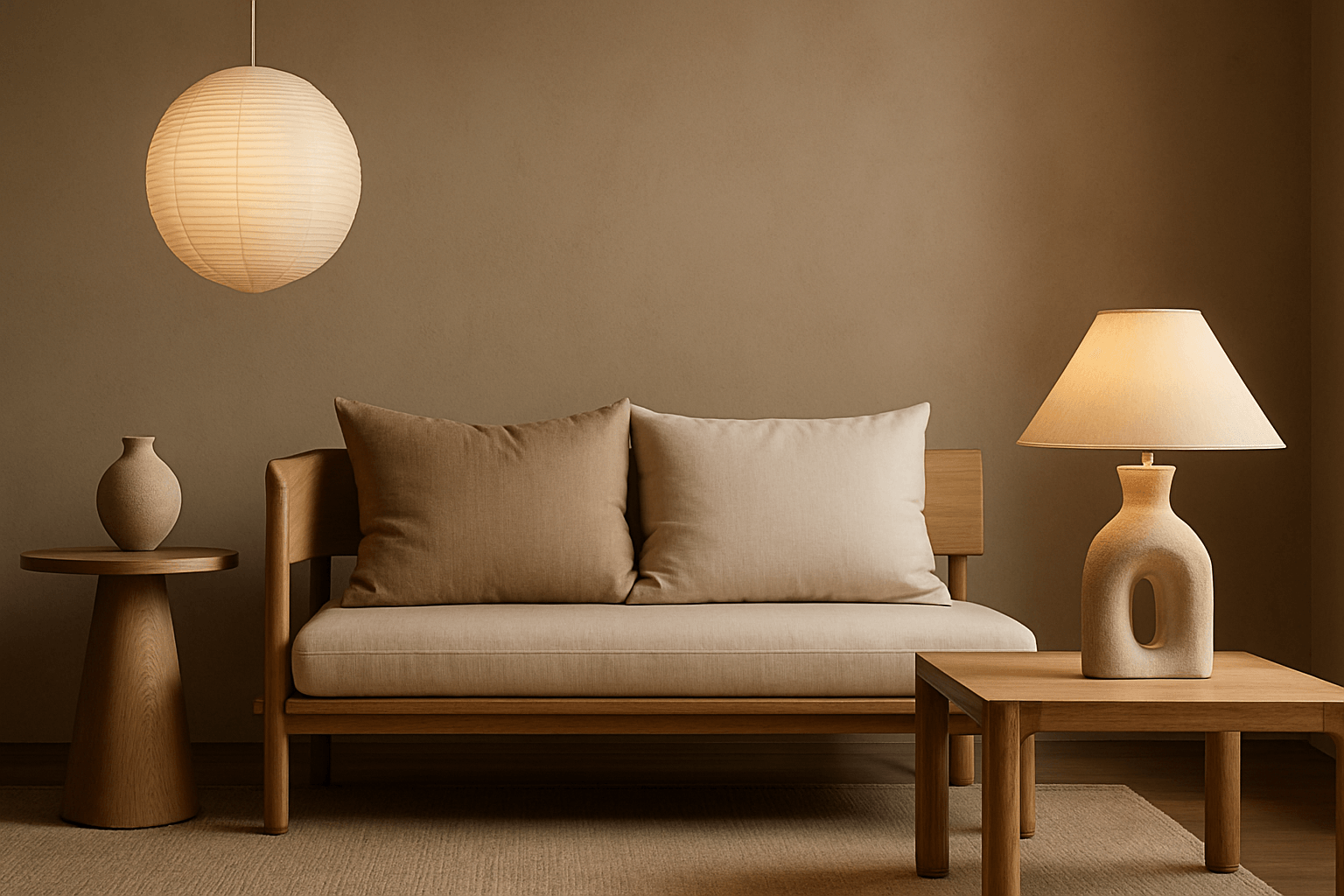Lighting in Interior Design: A Guide to Form, Function, and Feeling
Lighting is more than utility—it's atmosphere. In minimal interiors, where every element matters, lighting becomes one of the most powerful tools for shaping space. Whether you're designing a warm reading nook or a sculptural dining area, the right lighting transforms not just how your home looks, but how it feels.
1. The Three Layers of Light
Interior designers often work with three core lighting types:
-
Ambient lighting (general illumination): Usually the main light source in a room. Think ceiling fixtures, recessed lighting, or large pendant lights.
-
Task lighting (focused and practical): Reading lamps, under-cabinet lights, or desk lights that support specific activities.
-
Accent lighting (atmospheric and decorative): Wall sconces, LED strips, or art lights that add depth, mood, and highlight architectural or design features.
Balancing all three ensures your space feels both practical and emotionally resonant.
2. Choosing the Right Temperature
Light temperature is measured in Kelvin (K) and significantly affects the tone of a room:
-
2700K–3000K: Warm white – cozy and calming (great for bedrooms and living areas).
-
3500K–4100K: Neutral white – clean, bright, and focused (good for kitchens or offices).
-
5000K–6500K: Cool white/daylight – very bright and energizing (better for utility spaces or specific tasks).
Pick the tone based on how you want to feel in the room.
3. Natural Materials, Soft Shadows
Minimal design doesn’t mean sterile. Using lighting fixtures made from stone, wood, or textured fabrics softens a space and makes it feel lived-in. A linen lampshade diffuses light beautifully. A travertine base warms the glow. These natural materials play with light and shadow in subtle, organic ways.
4. Light as Sculpture
In modern interiors, light fixtures are no longer just functional. They're often the focal point. A marble table lamp with a brass arm becomes a statement. A cascading wall sconce turns a flat wall into visual poetry. When selecting lighting, think of each piece as a sculpture—even when turned off.
5. Dimmers, Layers, and Zones
Create dimension by controlling intensity. Dimmers allow you to shift from energizing brightness to gentle calm. Layering multiple light sources gives depth to flat rooms. Assigning "zones" (a reading corner, a dining zone) allows you to shape space with light, not just furniture.
6. The Psychology of Lighting
Lighting influences emotion and behavior. Cool light can enhance focus but increase stress if overused. Warm light promotes relaxation but may dull alertness. In a minimalist home, where distraction is minimized, lighting can play an outsized role in setting the day’s rhythm—from morning energy to evening wind-down.
Conclusion
Great lighting doesn’t call attention to itself—it enhances everything around it. In the context of minimal living, it becomes essential: grounding, accentuating, and defining each corner. Whether it’s a sculptural ceiling pendant or a barely-there wall lamp, consider your lighting not as an afterthought—but as an architectural element in its own right.
















